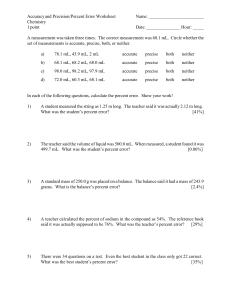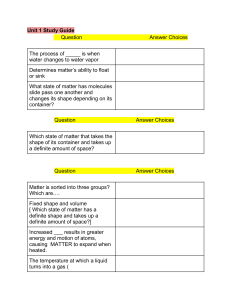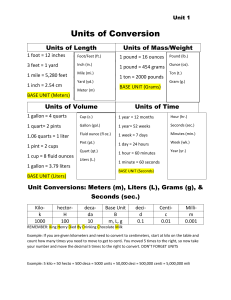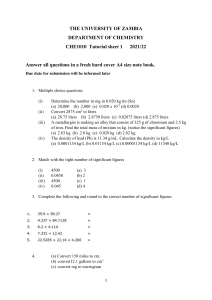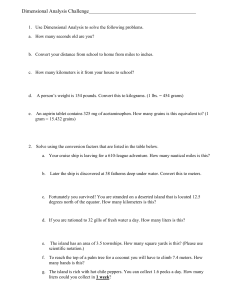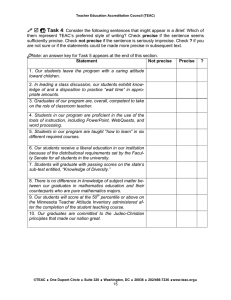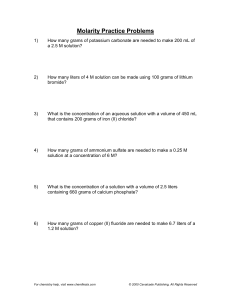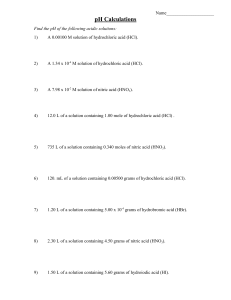Document 17550954
advertisement
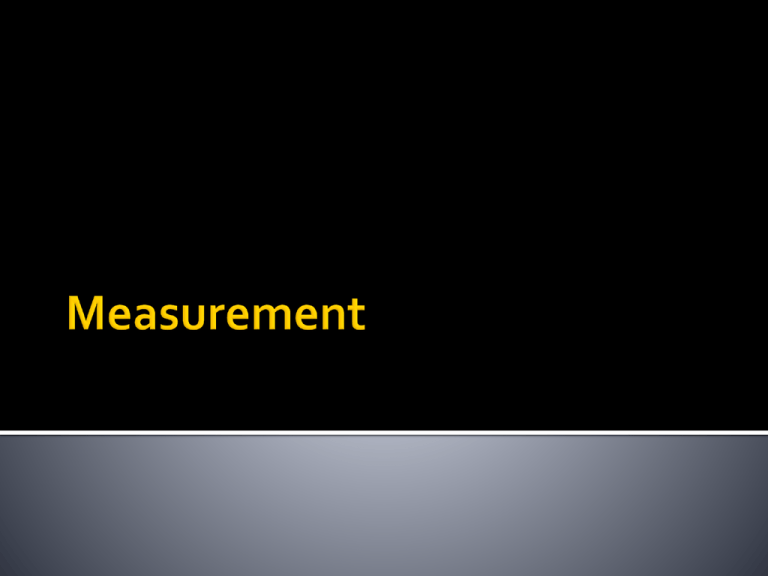
There are two types of measurement Quantitative measurements have a definite form and are usually expressed as numbers with units. ▪ E.g. 3.05 grams, 12 liters, 4.5 grams/ml Qualitative measurements are descriptive and have no numbers involved. ▪ E.g. It gave off a “reddish gas”, It had small bumps Measurements can be either direct or derived. Direct measurement can be taken straight from an object. ▪ E.g. The length of an object in meters Derived measurements must have a mathematical expression performed using several direct measurements ▪ E.g. The volume of an object is length x width x height Density is a very important derived measurement. Density = Mass Volume Density is an example of an intensive property because it does not depend on how much of the object you have on hand. How do you know if your measurement are true or not? Accurate measurements are measurements that are very close to the true value of a measurement. Precise measurements are measurements that are consistent, but not necessarily close to the true value. The goal is to have measurements that are both accurate and precise. Think of a dart board. http://practicalanalyst.com/wp-content/uploads/2007/12/accuracy.jpg The reliability of a measurement is expressed by the number of significant figures that are present.
